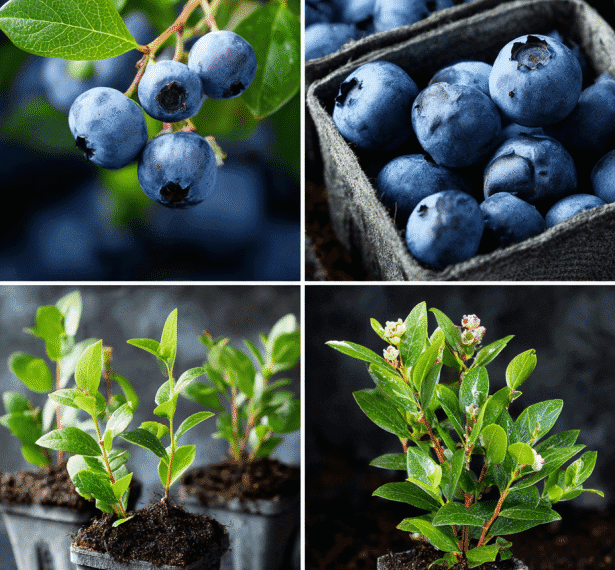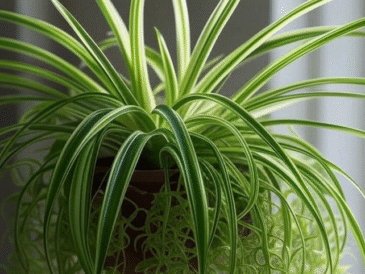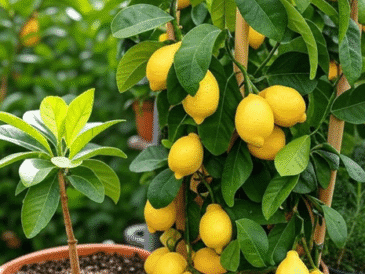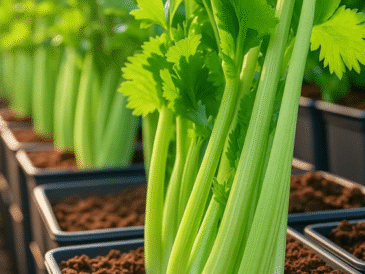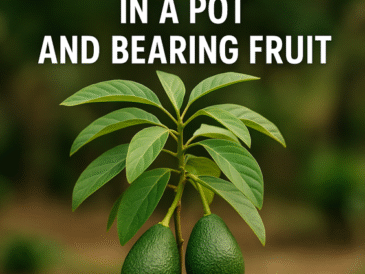If you’ve ever dreamed of plucking sweet, sun-warmed blueberries straight from your backyard or balcony, good news you don’t need to be a professional gardener or spend a fortune on nursery plants. With just a handful of store-bought blueberries, a bit of patience, and the right conditions, you can grow your very own blueberry bushes right at home.
Blueberries are among the most nutritious and delicious fruits you can grow. They’re rich in antioxidants, fiber, and vitamins C and K and they fit perfectly into any garden, balcony planter, or patio pot. Whether you live in the sunny South, the cool Northeast, or the Pacific Northwest, this guide will show you how to grow blueberries successfully in your local climate.
🌍 Step 1: Know Your Climate Zone Before You Start
Before getting your hands dirty, it’s crucial to know your USDA Hardiness Zone.
- Zones 3–5 (Northern U.S.): Cold winters; ideal for hardy varieties like ‘Northblue’ or ‘Patriot.’
- Zones 6–8 (Midwest & South): Try Southern Highbush varieties such as ‘Misty’ or ‘Sunshine Blue.’
- Zones 9–10 (Coastal & Southern California, Florida): Choose low-chill types like ‘Sharpblue’ or ‘Gulf Coast.’
🪴 Tip: Even if you live in a warm area, blueberries thrive in containers where soil acidity and moisture can be controlled easily.
🌱 Step 2: Choose the Right Blueberries
When shopping for blueberries at the grocery store, go for organic or untreated ones. Non-organic berries are often coated with chemicals that inhibit seed sprouting.
✅ Select:
- Plump, firm, and fully ripe berries (the deeper the color, the better).
- Berries free of mold or wrinkles.
These fresh fruits will be the starting point for your very own mini blueberry patch.
🫐 Step 3: Extracting the Tiny Seeds
Blueberry seeds are small, almost like dust, but collecting them is surprisingly fun!
Here’s how to do it:
- Mash a handful of blueberries in a bowl.
- Add a little water and stir well.
- Wait the seeds will sink to the bottom, while the pulp floats.
- Carefully pour off the pulp and repeat until you’re left with mostly seeds.
- Spread the seeds on a paper towel and let them dry for a few hours.
🌟 Pro Tip: Handle gently blueberry seeds are delicate. Don’t let them dry out completely if you plan to start germination soon.
❄️ Step 4: Stratification (Mimicking Winter)
Here’s where the magic of nature comes in. Blueberry seeds need a cold period to “wake up.” This process is called stratification.
- Place the dried seeds into a small container with moist peat moss, sphagnum, or a damp paper towel.
- Seal the container or bag and store it in the refrigerator (not freezer) at 35–40°F (1–4°C).
- Leave them there for 6–8 weeks.
This step mimics the natural winter dormancy that wild blueberries experience.
🌤️ Step 5: Time to Plant the Seeds
After stratification, it’s time for planting where patience meets possibility.
What You’ll Need:
- Small seed trays or pots
- A well-draining, acidic soil mix (pH 4.5–5.5) peat moss and sand work perfectly
- Spray bottle with water
- Plastic wrap or a humidity dome
Planting Steps:
- Fill your pots with the acidic soil mix.
- Lightly sprinkle seeds on top (they need light to germinate).
- Cover with a thin dusting of soil or just press lightly.
- Mist with water until the surface is damp.
- Cover with plastic wrap to keep moisture in.
Place in a warm, bright spot or under grow lights. Germination takes 6–8 weeks, so patience is your new gardening superpower!
🌿 Step 6: Caring for Your Blueberry Seedlings
Once tiny sprouts appear, you’re officially a blueberry parent! 🎉
Here’s how to care for them:
- Light: Provide 12–16 hours of light daily.
- Water: Keep the soil moist, never soggy.
- Air: Remove the cover to avoid mold once seedlings appear.
- Transplant: When seedlings have 2–3 sets of leaves, move them to individual pots.
💡 Extra Tip: Add a little compost or an acid-loving plant fertilizer every few weeks to support steady growth.
🌳 Step 7: Transplanting Outdoors (When They’re Ready)
When your plants reach 6 inches tall, they’re ready for their permanent home either in the garden or a large container.
Outdoor Tips by Region:
- Cool Northern States (Zones 3–5): Wait until frost danger has passed. Blueberries love full sun but appreciate protection from cold wind.
- Southern States (Zones 6–9): Plant in early spring or fall; provide partial afternoon shade in very hot climates.
- Coastal or Humid Areas: Ensure good airflow to prevent mildew.
Planting Guide:
- Choose a sunny, well-draining spot.
- Mix in peat moss, pine needles, or sulfur to lower pH.
- Space bushes 3–4 feet apart.
- Mulch with pine bark or wood chips to keep soil moist and acidic.
💧 Step 8: Long-Term Care for Thriving Blueberry Bushes
Blueberries are perennials meaning they come back year after year!
Here’s how to keep them happy:
- Watering: Keep soil evenly moist, especially during fruiting season.
- Fertilizing: Use acid-loving plant food once a month in spring and summer.
- Pruning: In years 3+, remove old wood to encourage fresh growth.
- Mulching: Refresh mulch yearly to maintain moisture and acidity.
🌿 Did You Know?
Blueberries can live up to 20 years with proper care! That’s two decades of delicious, antioxidant-packed berries.
🕰️ Step 9: Patience Pays Off When Will They Fruit?
Growing blueberries from seed is a long-term project, but oh, the reward!
It usually takes 3–4 years before seed-grown bushes produce fruit. If that feels like forever, remember: each year brings stronger plants, deeper roots, and more blooms.
👉 Want faster results? Start some seeds and buy one mature plant this way, you’ll enjoy early harvests while waiting for your seedlings to mature.
💙 Step 10: Benefits of Growing Your Own Blueberries
Besides the joy of nurturing something from scratch, there are amazing perks:
- Organic & Pesticide-Free: You know exactly what’s in your food.
- Budget-Friendly: A handful of berries can yield dozens of plants.
- Aesthetic Appeal: Lush green leaves and tiny bell-shaped flowers beautify your garden.
- Wildlife-Friendly: Bees and butterflies love blueberry blossoms.
- Health Boost: Blueberries are antioxidant powerhouses that support brain and heart health.
🏡 Final Thoughts: From Berry to Bush – Your Blueberry Adventure Awaits
Growing blueberries from store-bought fruit is more than just gardening it’s a journey of patience, curiosity, and reward. Every U.S. region has its own rhythm, but the process remains universally satisfying.
So the next time you enjoy a handful of blueberries, don’t toss the leftovers — plant them! In a few years, your morning smoothie might come from your own backyard harvest.
Remember:
- Be patient 🌿
- Keep soil acidic 🌸
- Stay consistent 💧
- Celebrate small victories 🫐
Your future self and your taste buds will thank you.
